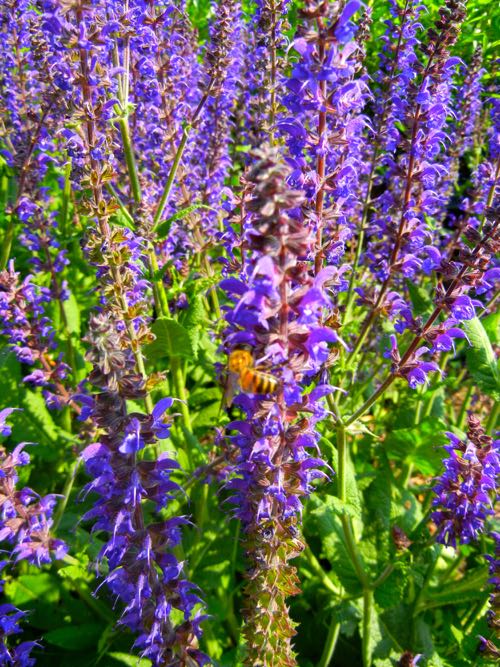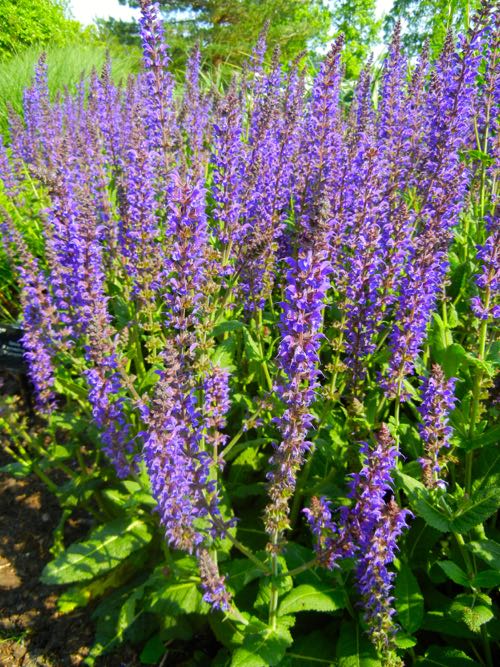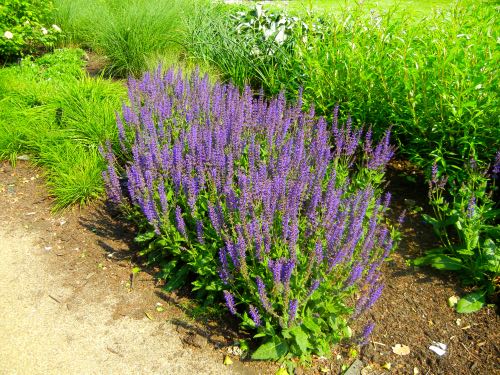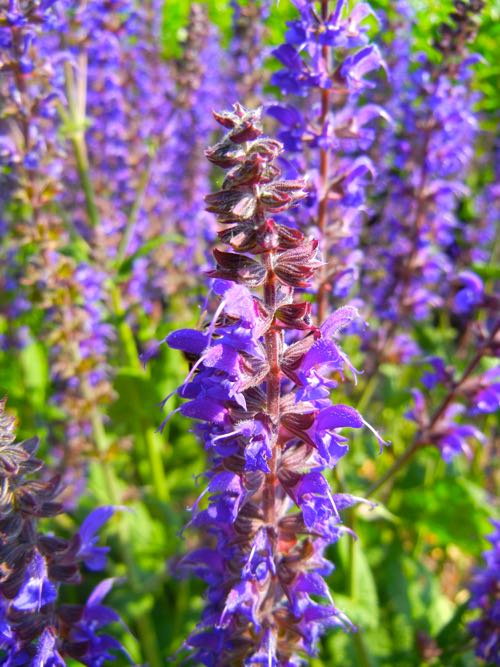Salvia sylvestris ‘Mainacht’: A Burst of Vibrant Beauty in Your Garden
Background and Historical Significance
Discover the captivating allure of Salvia sylvestris ‘Mainacht’, commonly known as Wood Sage ‘Mainacht’. This perennial sage, a member of the Lamiaceae family, has delighted garden enthusiasts for years. Its name, derived from the Latin word sylvestris meaning forest or wood, reflects its natural affinity for sun-drenched environments. ‘Mainacht‘ is a hybrid variety, resulting from a cross between S. nemorosa and S. pratensis, combining the best qualities of both parent species.
Characteristics and Description
Salvia sylvestris ‘Mainacht’ is a compact perennial that adds a touch of elegance to any garden. With its stunning purple-violet blossoms and dark green aromatic foliage, this cultivar creates a striking contrast against other plants. The vibrant racemes of flowers emerge in the early and mid-summer months, attracting enchanting hummingbirds and butterflies to your garden. ‘Mainacht’ brings a sense of vibrancy and natural beauty to any landscape.
Origin and Native Habitat
Although ‘Mainacht’ is a cultivated variety, it draws its lineage from the natural habitats of its parent species. Salvia sylvestris, native to central and southern Europe, and Salvia pratensis, native to Europe and western Asia, provide the foundation for the exceptional traits found in ‘Mainacht’. This hybrid variety combines the resilience and beauty of its predecessors, resulting in a garden gem that thrives in various climates.
Discovery and Synonyms
Salvia sylvestris ‘Mainacht’ has captured the hearts of gardeners around the world. It is often referred to by other names, including Salvia nemorosa ‘Mai Nacht’, Salvia sylvestris ‘May Night’, Salvia nemorosa ‘May Night’, Salvia × sylvestris, and Salvia × superba. These synonyms highlight the widespread recognition and popularity of this captivating sage cultivar.
Cultivation of Salvia sylvestris ‘Mainacht’:
Cultivating Salvia sylvestris ‘Mainacht’ is a straightforward and gratifying process. By following these essential guidelines, you can ensure its optimal growth and long-lasting beauty in your garden:
Location: Select a sunny spot in your garden to provide the ideal growing conditions for ‘Mainacht’. This cultivar thrives in full sun, which promotes robust growth and abundant flowering.
Soil Requirements: Prepare well-drained soil that is fertile and moist. Amend heavy clay or sandy soils with organic matter, such as compost, to improve drainage and provide essential nutrients for healthy plant development.
Planting: Dig a hole slightly larger than the root ball of the Salvia sylvestris ‘Mainacht’ plant. Place the plant in the hole, ensuring the top of the root ball is level with or slightly above the soil surface. Backfill the hole with soil, gently firming it around the roots.
Watering: After planting, thoroughly water the ‘Mainacht’ sage to settle the soil and encourage root establishment. During the growing season, water regularly to keep the soil evenly moist, but avoid overwatering, as excessive moisture can lead to root rot.
Watering and Fertilization: While Salvia sylvestris ‘Mainacht’ is relatively drought-tolerant once established, it still requires regular watering, especially during prolonged dry periods. Water deeply at the base of the plant to encourage deep root growth. Applying a balanced fertilizer during the growing season can promote healthy foliage and abundant flowering, but avoid excessive fertilization, as it may result in leggy growth with fewer flowers.
Pruning:
Pruning is essential for maintaining the shape and vigor of Salvia sylvestris ‘Mainacht’. After the flowering season, typically in late summer or early fall, trim back the spent flower stems to encourage new growth and potential reblooming. Additionally, prune any damaged or overgrown branches to maintain a compact and tidy appearance.
Division: Over time, the ‘Mainacht’ sage may benefit from division to rejuvenate the plant and promote better flowering. Divide the clumps in early spring, ensuring each division has sufficient roots and healthy growth. Replant the divisions in prepared soil, spacing them adequately to allow for their future growth.
Pest and Disease Control: ‘Mainacht’ sage is generally resistant to pests and diseases. However, keep an eye out for common garden pests such as aphids or spider mites. If necessary, treat affected plants with organic pest control methods or insecticidal soap to prevent infestations.
Embrace the Vibrant Splendor of Salvia sylvestris ‘Mainacht’
Whether you’re seeking to enhance your garden’s color palette or attract delightful pollinators, Salvia sylvestris ‘Mainacht’ is a superb choice. Its robust nature, stunning violet blooms, and low-maintenance requirements make it a favorite among both novice and experienced gardeners. Embrace the vibrant splendor of ‘Mainacht’ and create an enchanting sanctuary where the beauty of nature thrives.







